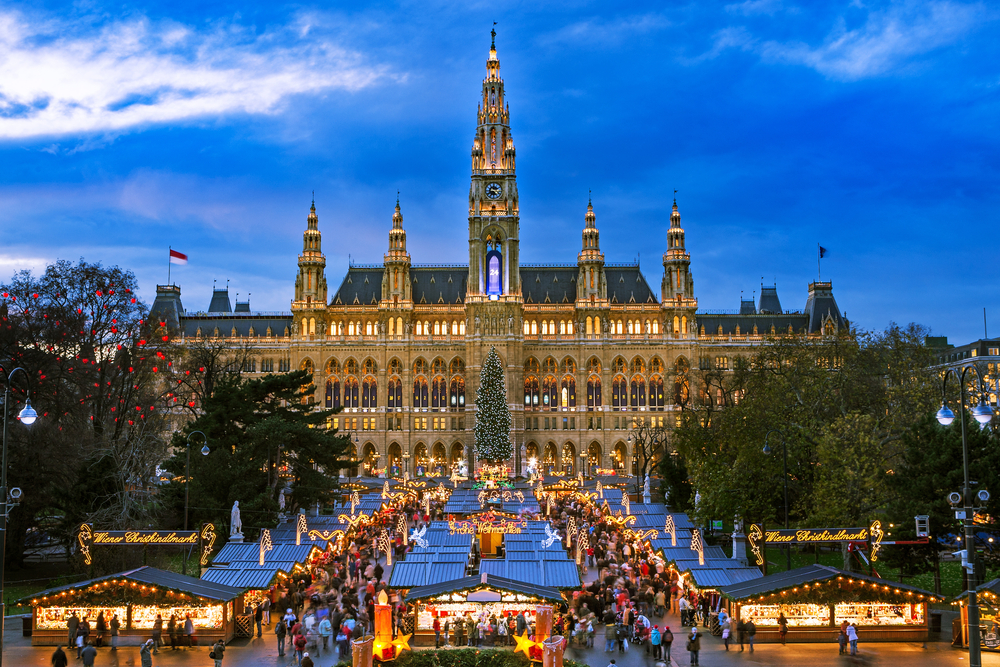
Vienna: A Guide for EOSC Stakeholders Forum 2018 Attendees
Vienna is this year's home of the EOSC Stakeholders Forum. The Austrian capital city presents plenty of opportunities to unwind, relax and enjoy after your action packed sessions at the forum.
Experience
Vienna's famous Christmas Market

The EOSC Stakeholder Forum is being held just in time to enjoy Vienna's famous Christmas market which will be held from 16 November to 26 December in front of the Vienna City Call (Wiener Rathaus). For more information, visit the Viennese Christmas Dream official website.
Viennese Coffee Houses

The Viennese coffee house (German: das Wiener Kaffeehaus) is a typical institution of Vienna that played an important part in shaping Viennese culture. Since October 2011 the "Viennese Coffee House Culture" is listed as "Intangible Cultural Heritage" in the Austrian inventory of the "National Agency for the Intangible Cultural Heritage", a part of UNESCO. The Viennese coffee house is described in this inventory as a place "where time and space are consumed, but only the coffee is found on the bill." Remember: Viennese cafés have a very slow-paced environment, so approach them as you would a sit-down restaurant -- bring a book or some friends, or make use of the newspapers on hand and enjoy your hours relaxing there!
Enjoy a concert

Art and culture had a long tradition in Vienna, including theatre, opera, classical music and fine arts. There are dozens of classical concerts happening on a daily basis in Vienna. Check out some of the classical concerts happening during the EOSC Stakeholders Forum:
Must see
Vienna's Historic City Centre (Innere Stadt)
The city centre itself is three-square kilometre UNESCO World Heritage Site. From the Austria Center Vienna, you can take the Wien Kaisermühlen-Kagran underground train stop and head to Stephansplatz.
St. Stephen's Cathedral (Stephansdom)
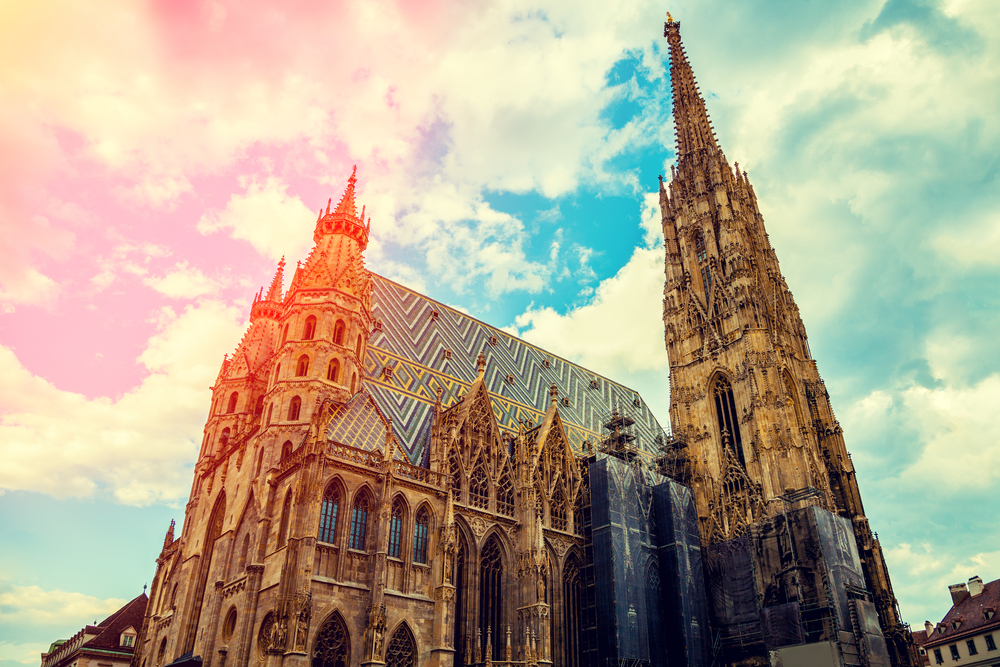
Showcasing a patchwork of architectural styles, but predominantly Gothic. None of the original construction remains, the oldest extant sections are the thirteenth century Giant Gate (Riesentor) and Towers of the Heathens (Heidentürme), both of which are Romanesque. The 448 ft South Tower (Südturm), often known by its Viennese diminutive Steffl (also a nickname for the entire cathedral), was finished in 1433. This is where the Pummerin, a huge bell cast from melted-down Turkish cannons, hangs. Steffl's intended twin, the North Tower (Nordturm), was never finished.
Hofburg Palace

This immense palace complex grew into a large, unwieldy series of buildings over the years and was the imperial residence of the Habsburg emperors until 1918. What began as a medieval castle (whose chapel is the only original element of that building to survive) was expanded and redecorated as the Habsburgs' power increased correspondingly.
Vienna Opera House
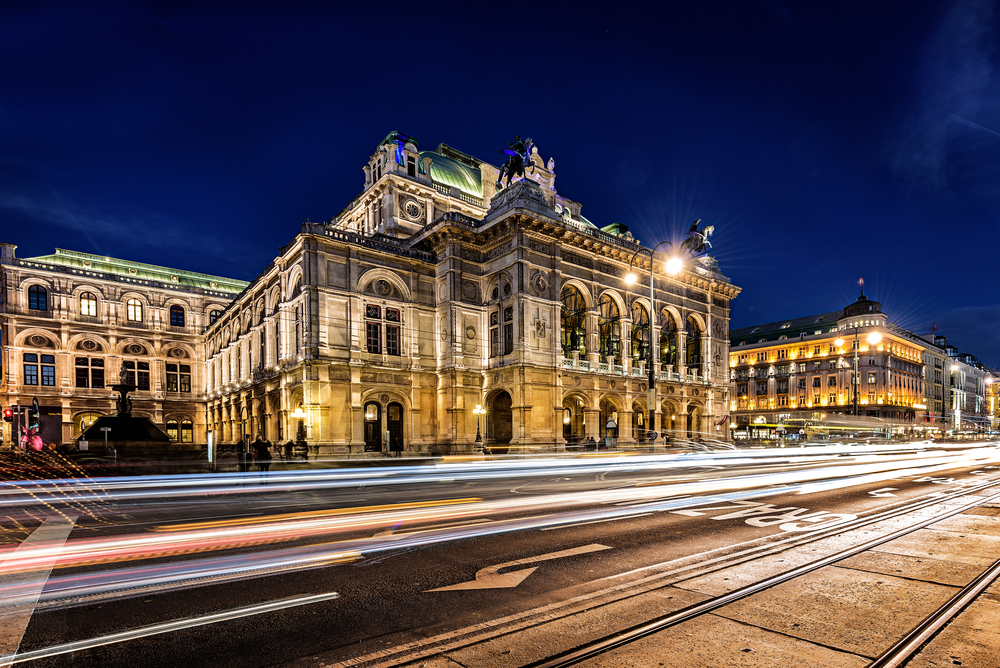
Probably the most-beloved symbol of Viennese arts, and one of the first buildings to be rebuilt in the postwar era. It was built from 1861-1869 under the direction of architects Eduard van der Nüll and August von Siccardsburg for then-emperor Franz Josef I. The first performance was Don Giovanni, an opera by Austrian native Mozart, on 25 May 1869.
Vienna City Hall (Wiener Rathaus)
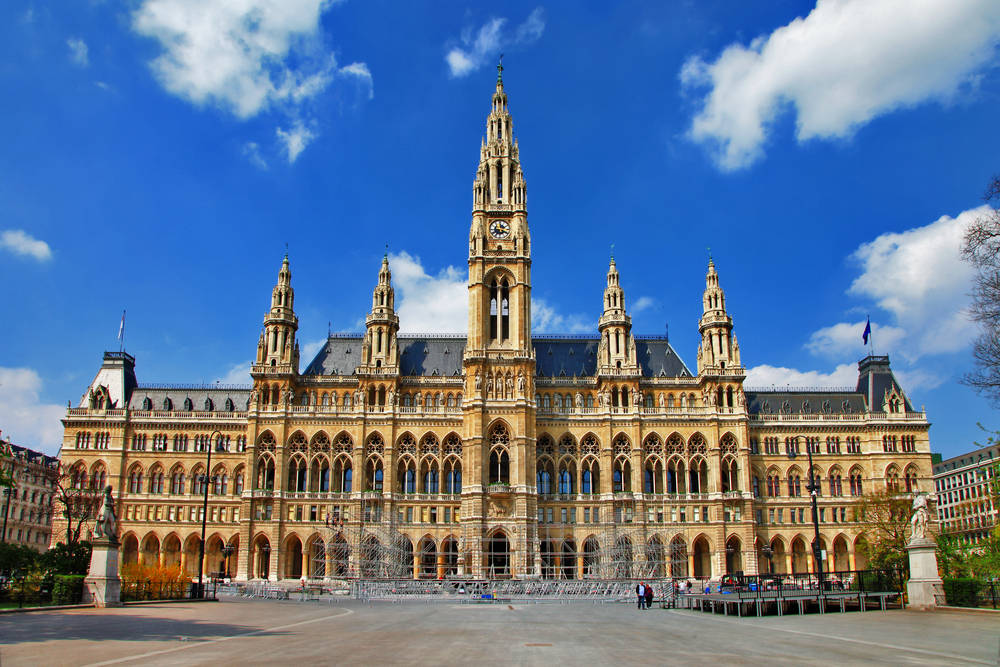
Vienna City Hall (German: Wiener Rathaus) is the seat of local government of Vienna, located on Rathausplatz in the Innere Stadt district. Constructed from 1872 to 1883 in a Neo-Gothic style according to plans designed by Friedrich von Schmidt, it houses the office of the Mayor of Vienna as well as the chambers of the city council and Vienna Landtag diet. It's also the backdrop of Vienna's famous Christmas market!
Austrian Parliament Building
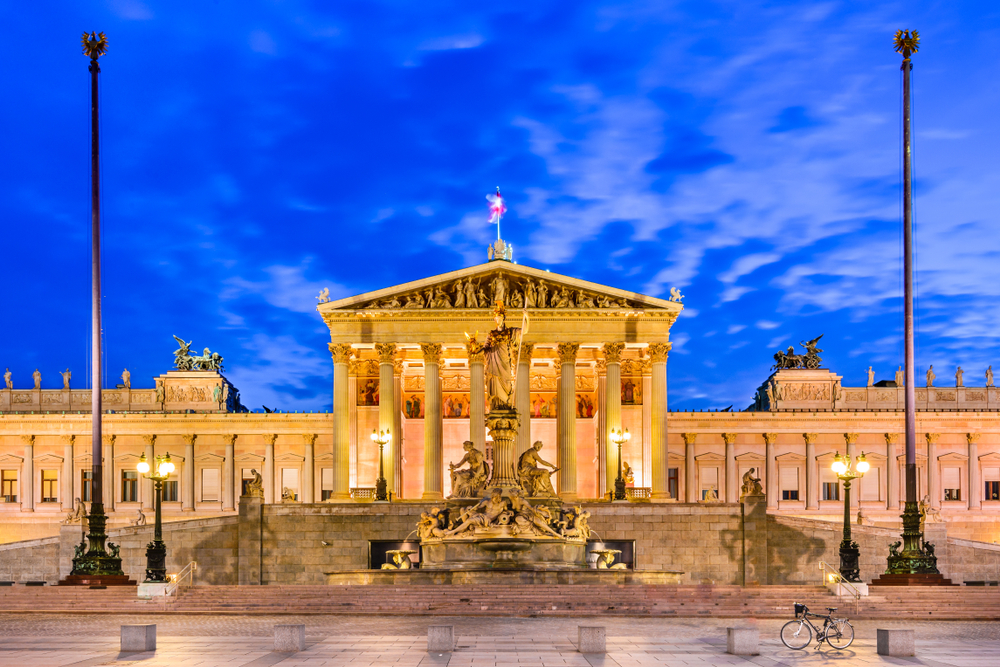
The Austrian Parliament Building (German: Parlamentsgebäude, colloquially das Parlament) in Vienna is where the two houses of the Austrian Parliament conduct their sessions. The building is located on the Ringstraße boulevard in the first district Innere Stadt, near Hofburg Palace and the Palace of Justice. It was built to house the two chambers of the Imperial Council (Reichsrat), the bicameral legislature of the Cisleithanian (Austrian) part of the Austro-Hungarian Empire.
Food
Wiener Schnitzel

Source: Wikimedia
Veal or pork cutlet punded flat and coated with flour, egg and breadcrumbs fried in clarified butter. Available in every restaurant serving Viennese cuisine and can be eaten hot or cold.
Tafelspitz
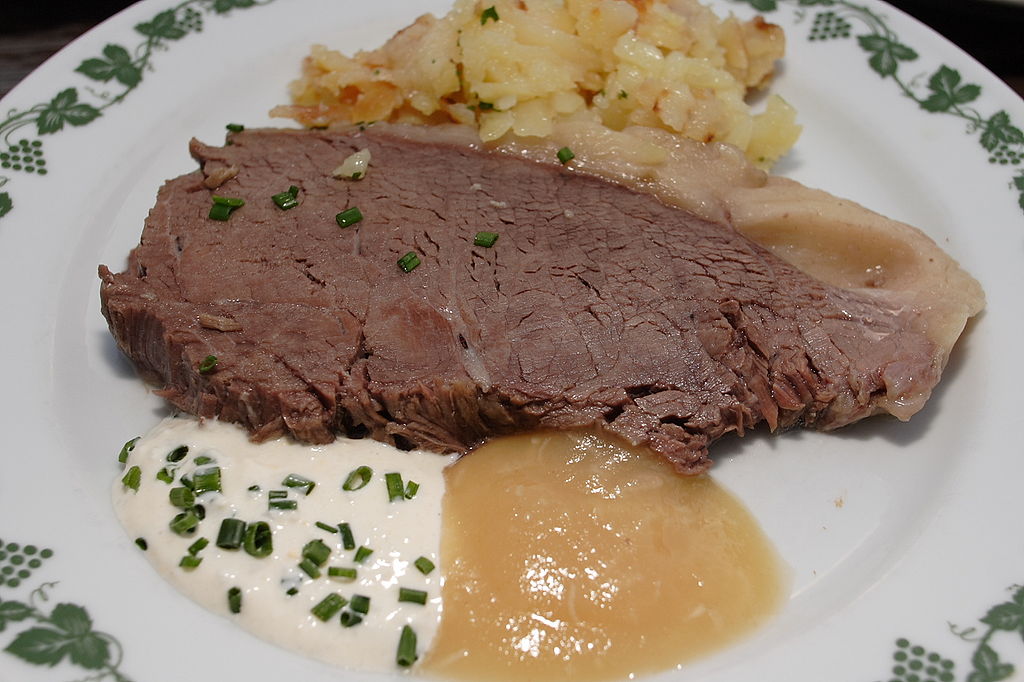
Source: Wikimedia
Tafelspitz (GermanTafelspitz, literally meaning tip (of meat) for the table) is boiled veal or beef in broth, served with a mix of minced apples and horseradish. It is a classic dish of the Viennese cuisine and popular in all of Austria.
Apple strudel

Source: Wikimedia
Tafelspitz (GermanTafelspitz, literally meaning tip (of meat) for the table) is boiled veal or beef in broth, served with a mix of minced apples and horseradish. It is a classic dish of the Viennese cuisine and popular in all of Austria.
Sachertorte

Sachertorte is a specific type of chocolate cake invented by Franz Sacher in 1832 for Prince Wenzel von Metternich in Vienna. It is one of the most famous Viennese culinary specialties. Today, the Original Sacher Torte is one of the most recognized cakes in the world and even helped establish the five star Hotel Sacher in Vienna founded in 1876 by Franz Sacher's son, Eduard Sacher. You can still order this at the same hotel today.
So much experiences to miss if you haven't registered yet for the EOSC Stakeholder Forum! Register now before the deadline closes at November 14!
